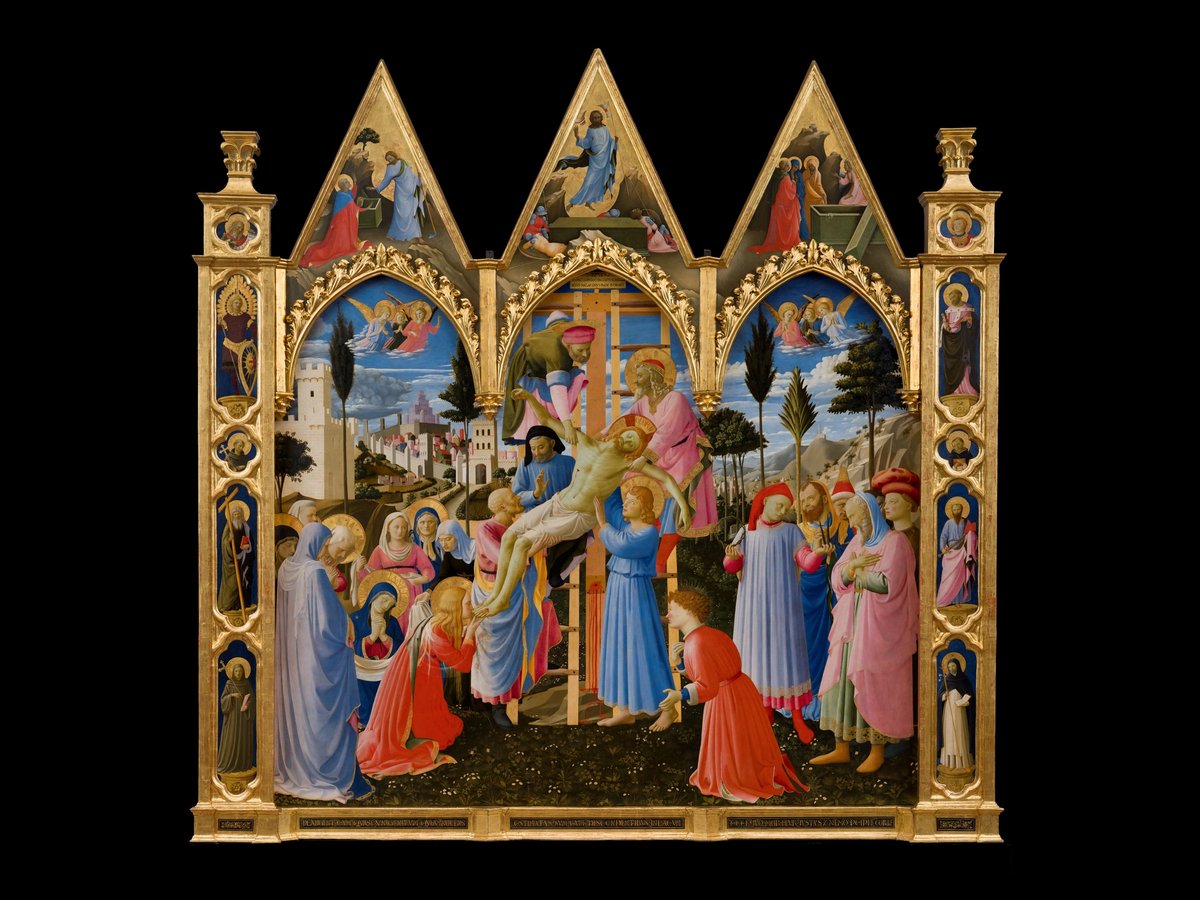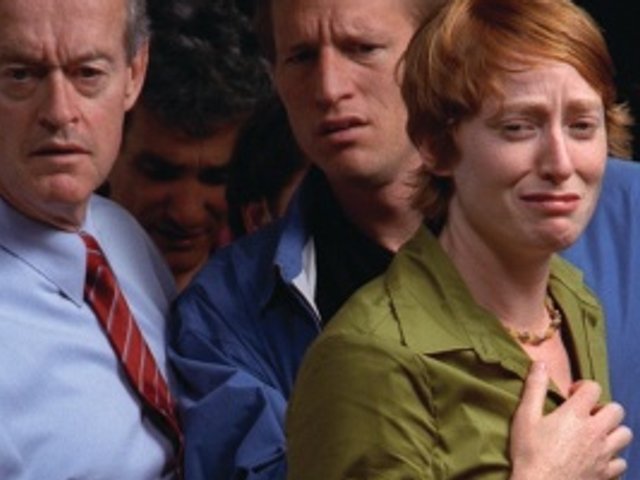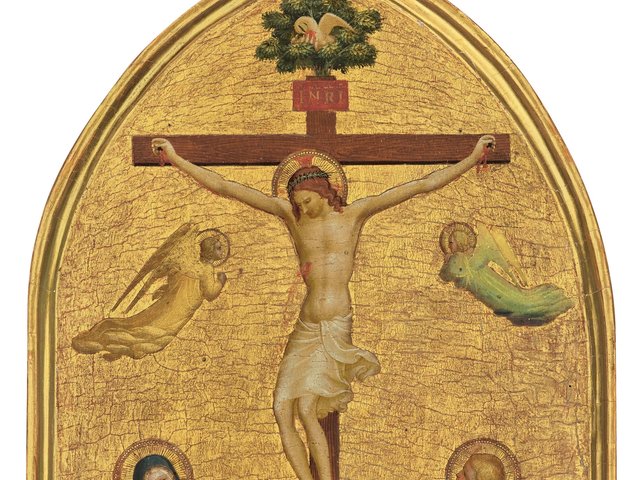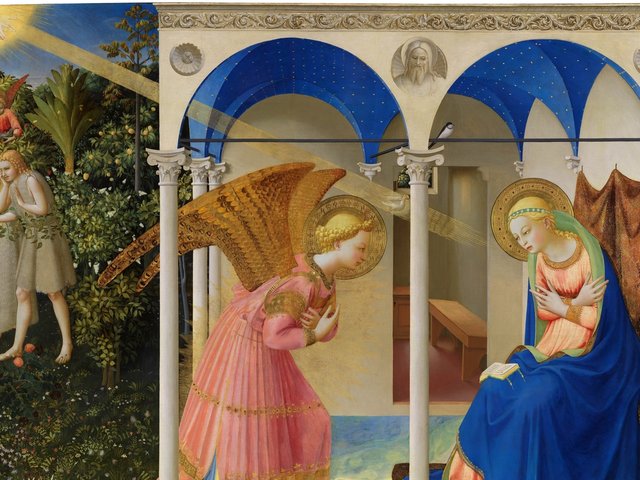A monumental altarpiece by Fra Angelico, hailed as representing a critical turning point in Western art, has been returned to its original glory after a two-year restoration project. The work on the Santa Trinita Altarpiece (Deposition from the Cross) (1429-32) was completed ahead of a major exhibition on the Italian painter, due to open at Florence’s Palazzo Strozzi in September, and has provided fresh insight into his innovations.
The altarpiece, now back on display in Florence’s Museo di San Marco, was originally commissioned by the Italian banker and politician Palla Strozzi for his family chapel, the church of Santa Trinita. It depicts Christ being taken down from the cross by four men, with a large crowd gathered around them and an undulating landscape in the background. Mary Magdalene is shown kissing Christ’s feet, while in the foreground a kneeling figure—possibly the Blessed Alessio Strozzi—stretches a hand out to the viewer. Scenes of Christ’s life, painted by Fra Angelico’s mentor Lorenzo Monaco, and depictions of saints surround the central image.
The work is unique, says Angelo Tartuferi, the former director of Florence institutions including the Uffizi Gallery, who supervised the project, because “for the first time in Western art, the death of Christ is seen not only as a simple visual translation of the sacred scriptures, but as an event to be commented on and interpreted in the context of Christian humanism of the early 15th century”—which emphasised Jesus’s connection to humanity and the real world. In Fra Angelico’s practice, he continues, it marks a critical break from his early, late-Gothic style.
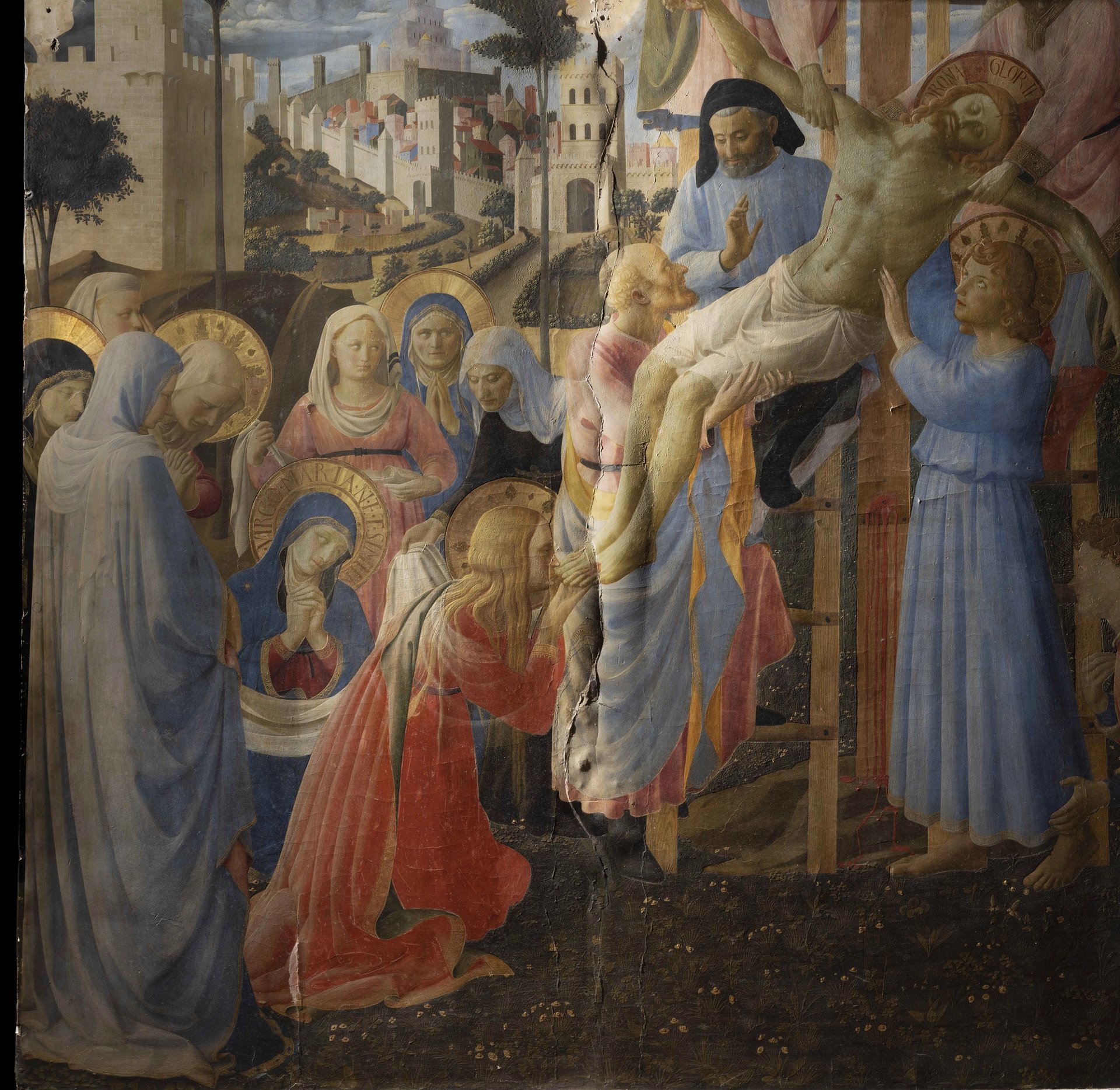
The surface of the painting before restoration, shown under grazing light Courtesy of Friends of Florence
The restoration, organised as a collaboration between the local culture ministry and the non-profit Friends of Florence, has seen thick layers of varnish removed from the work’s surface. The varnish, applied over centuries, was a glue, which had dulled the painting significantly and also caused “a lot of little losses”, says the conservator Lucia Biondi, which she carefully retouched.
The most profound result of this work is “the recovery of much of the luminosity” of the painting, “which particularly enhances the vast landscape in the background”, says Tartuferi, who is also the co-curator of the Palazzo Strozzi exhibition. It has also, Biondi continues, revealed the vibrancy of the colours, and emphasised Fra Angelico’s intricate handling of depth and transparency—made clear, for example, in the rendering of the figures and their clothing.
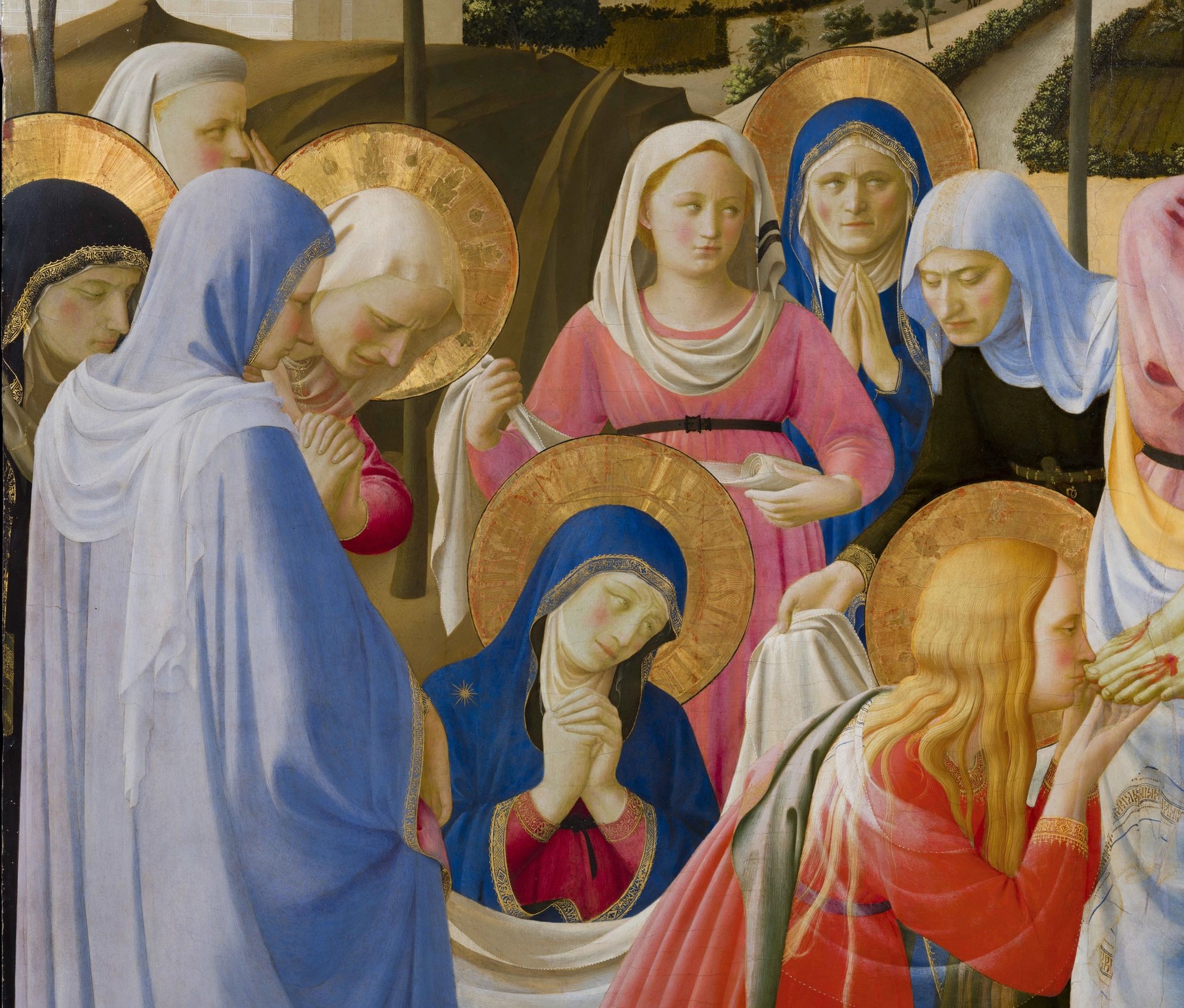
The work undertaken by Lucia Biondi revealed the luminous colour of the work and Fra Angelico’s expert handling of transparency Courtesy of Friends of Florence
Diagnostic tests, including reflectography and x-rays, were enacted on the altarpiece to analyse its structure and gain a greater understanding of who was behind its various parts. This work allowed the team to confirm that the “interventions” by Fra Angelico and Monaco are “clearly distinct”, Tartuferi says. The reflectography revealed no evidence, for example, of Lorenzo Monaco having done any work on the central panel, he continues, and suggested that Fra Angelico adapted it to fit beneath Monaco’s three pinnacles—“not without problems”. It is likely, Tartuferi says, that Fra Angelico took over working on the altarpiece after Monaco died in 1424.
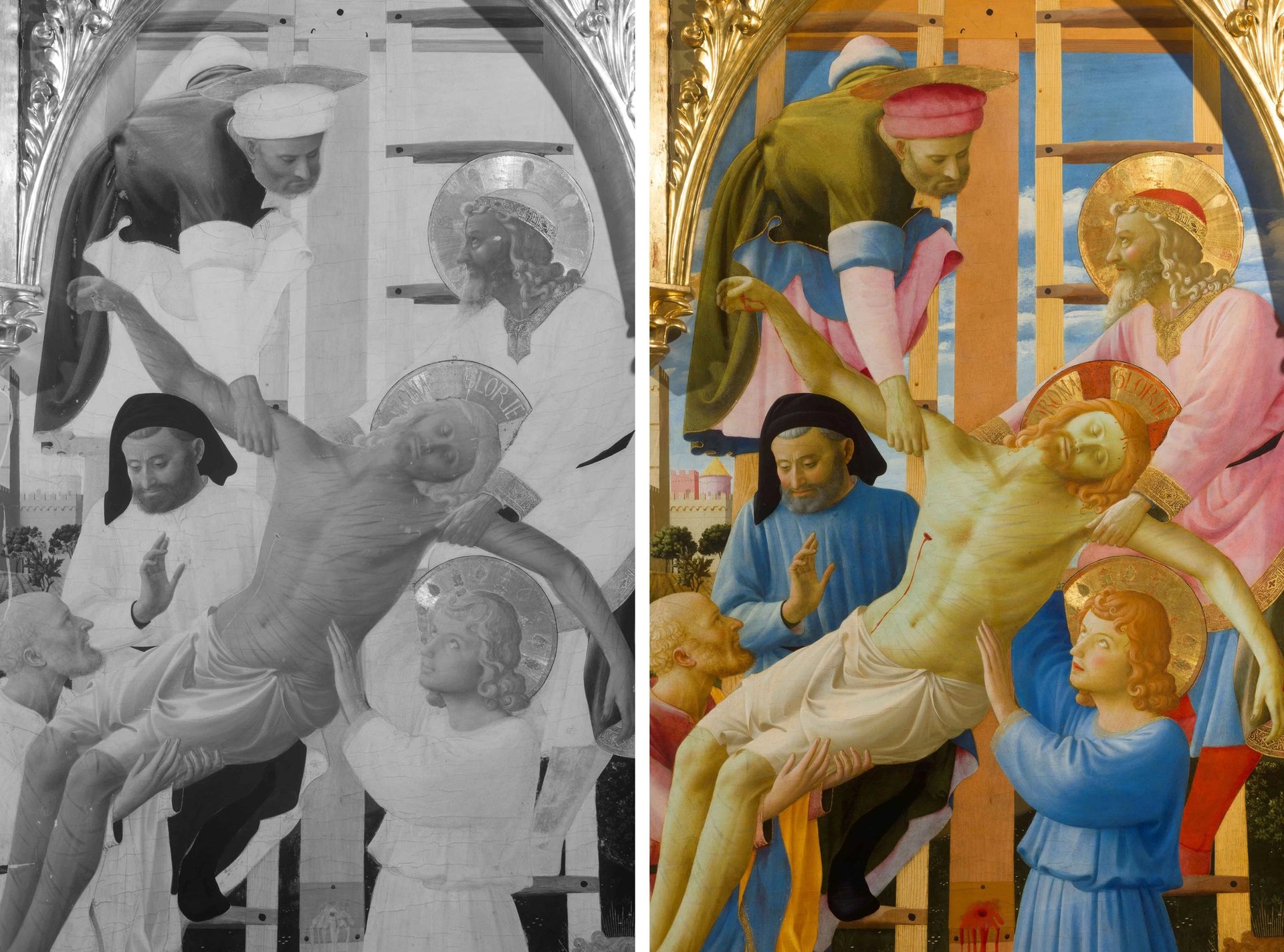
Left: the deposition scene under reflectography, which confirmed that Lorenzo Monaco had not worked on the central panel. Right: the scene after restoration Courtesy of Friends of Florence
Fra Angelico, born Guido Di Pietro, was a Dominican friar as well as an artist, joining the convent of San Domenico in Fiesole by 1423. As a painter, he is renowned for his handling of space and naturalism, and the intense emotion of his paintings. This is something that Biondi, who has previously restored other Fra Angelico works such as his Bosco ai Frati Altarpiece, experienced first hand, living with the Deposition altarpiece for the two years because it was too big for her studio. She emphasises the profound impact it had on her. “Maybe it's silly, but it's really true,” she says.
Securing a legacy
The results from the restoration are still being analysed, but Tartuferi says that the project has already “certified the founding role of Angelico, together with [fellow Quattrocento painter] Masaccio, in the birth of Renaissance painting, not only in Italy but also at a European level”. With aspects such as the remarkable attention paid to costume and botanical detail, he continues, “the dialectical relationship between Angelico’s painting and Flemish painting of the period must also be underlined”.
Simonetta Brandolini, the president of Friends of Florence—whose donors funded the restoration—says that the Santa Trinita altarpiece offers a reminder of what it is about Fra Angelico that so speaks to viewers. “I think he's an artist who makes you not just look but try to understand," she says. "His figures almost call out to you; they are so expressive, which is so rare at that time. He creates a world that you could actually think of living in, with this beautiful light.”
The work has been returned to the Museo di San Marco’s Fra Angelico Room, which houses the most expansive collection of paintings on wood by the artist, many of them restored with funding from Friends of Florence—such as the famous Bosco ai Frati Altarpiece. At the Palazzo Strozzi exhibition, it will be joined by other Fra Angelico works at present undergoing restoration, including the triptych he created for the Church of San Domenico in nearby Fiesole.
• Angelico, Palazzo Strozzi, Florence, 26 September-25 January 2026


